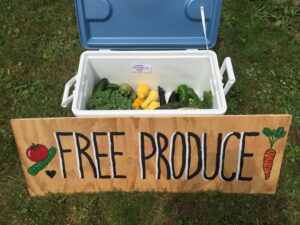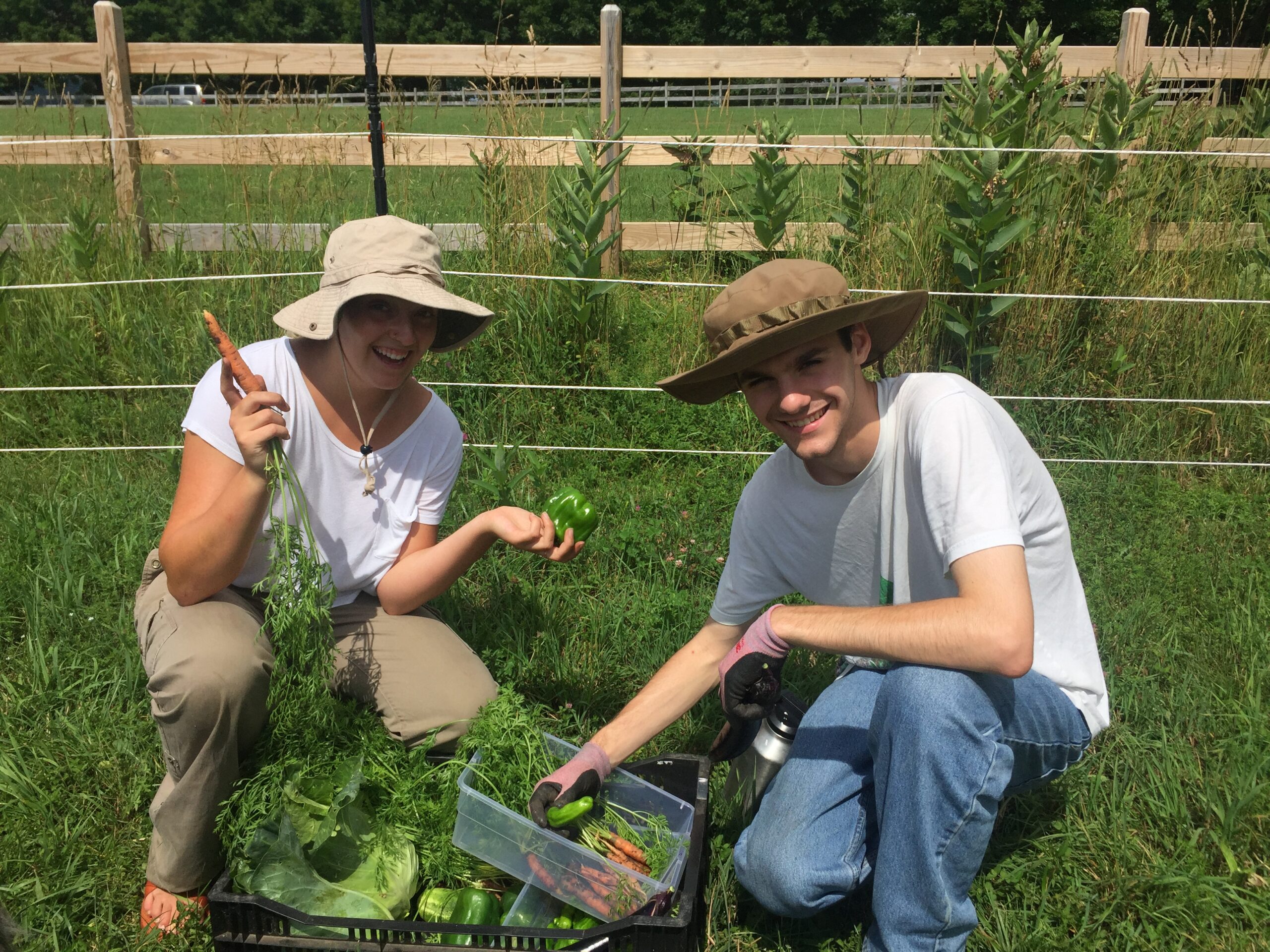As our summer internship draws to a close, our team is feeling grateful for the amount of growth, headway, and companionship that has been cultivated in a short ten weeks. Our two interns, Aidan and Sierra, have assisted our on-site directors this summer with garden maintenance, trail building, data collection, and environmental programming. Their efforts will have lasting impacts at The Uplands!
Trail building
One major goal for this summer was to create a woodland trail that visitors of varying abilities could enjoy. Our team decided on a half-mile path that begins and ends near the retreat center. The trail winds through a young striped maple dominated forest, then out into a field with a breathtaking view, through older ash trees and sugar maples, and by a field of wildflowers and berry bushes.


The interns spent many hours lopping branches, removing debris, shaping the ground, and creating rock stairs. Always with an eye for reducing erosion, they developed a meandering path through a variety of habitats.

Through the interview process, both interns expressed interest in developing physical labor skills. By using new tools and getting coached on proper form, they certainly got what they hoped for!


The Wellness Walk

In addition to creating the woodland path, our team developed a series of signs along the trail, now called “The Wellness Walk”. The purpose of these signs is to connect aspects of human wellness to aspects of the forest’s well-being. Themes like community support, transformation, and resilience are showcased in ways that encourage the visitor to relate to the natural world in new ways. We hope that visitors leave this walk feeling inspired and rejuvenated!


Gardening

Aidan and Sierra assisted with weeding, planting, mulching, and harvesting in The Uplands garden. While tending to the plants, our Agricultural Director shared knowledge on sustainable agriculture, permaculture, and creating a biodiverse ecosystem that supports long-term health.

Ordinarily, much of the produce from The Uplands garden would be used for meals during our retreats, and extra veggies are generally donated to the Walton Food Bank each week. This year we have not hosted any retreats due to COVID-19, so we’ve had quite the bounty of vegetables to disperse! Sierra had the idea to set up a “Free Produce” cooler on the roadside of The Uplands so that neighbors and those traveling by could help themselves.

Environmental Studies
Sierra and Aidan joined our Environmental Consultant, Jacob, to collect and analyze environmental data. To better understand the composition of our fields and forests, this team of three chose randomized points along the Wellness Walk trail and other areas of the property. At each spot, the team completed an inventory of the species present. Analyzing the data helps us understand the land better, which allows us to 1) teach guests about the local wildlife and 2) make informed land management decisions.

The interns also monitored bird populations in our fields throughout the summer. We’ve learned that some birds whose populations are declining (Savannah Sparrow, Bobolink, Eastern Meadowlark, and more) use our fields for nesting and raising their young. The biggest threat to grassland birds in our area is mowing. Mowing at the wrong time can destroy nests and baby birds. Because of this, we now time our mowing to reduce harmful impact on these creatures. Continued monitoring over the years should show an increase of these birds in our fields.

Finally, the interns created a Monarch butterfly conservation area near the Wellness Walk. By monitoring the number of caterpillars, eggs, and chrysalises on Milkweed plants in this area, we can better understand how these insects use the habitat. We aim to provide a safe environment for Monarchs to lay eggs and hatch before their migration south.

Other environmental materials
Sierra put her artistic flair to use by creating hand-painted labels for produce in the garden. This way, guests can know which types of vegetables are growing where Uplands staff aren’t available.

Aidan developed some wildlife brochures that will help visitors find and identify various creatures around The Uplands. Keep your eye out for these materials on your next visit!


During this summer of uncertainty at The Uplands, Sierra and Aidan have lifted our spirits and sparked inspiration. While we value all of their work and the fantastic goals they accomplished, we will remember most their companionship, their insights and thoughtfulness, and the wonderful conversations we shared. We will miss them dearly, and look forward to seeing what their futures hold!








